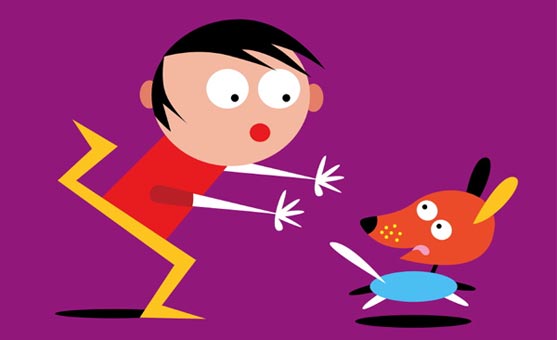When I first started writing, I’d never heard of motivation reaction units (MRU). What I did know, though, was sometimes things just didn’t seem to flow. Sections of prose would feel awkward and just not right. So I would re-read and re-word until they did.
Even after I did know what motivation reaction units were, it took a while for it to all gel in my brain and for me to realize that I had an issue with them.
My issue might not be the same one you have, but I’m betting in one way or another, at some time, most writers are messing up these small, but very important building blocks of writing and not even realizing it–totally confusing their reader and screwing with their book’s pacing.
So first, what motivation reaction units are.
Quite simply something happens (motivation) and your character reacts (reaction). The key is, that in your book, this should happen over and over again. If there is no motivation–your character just reacts–you will create a total head-scratching moment for your reader. If there is a motivation, but your character does nothing, you will create a book-throwing moment for your readers.
Characters, you see, need to ACT and they need to act a lot. If they don’t, they are just a leaf being pushed along by the stream of events in the story, and they are very, very boring.
So something happens (motivation) and your character reacts (reaction).
Next, how motivation reaction units should look.
 Without even knowing the term, I had the motivation and reaction thing pretty much down.
Without even knowing the term, I had the motivation and reaction thing pretty much down.
But what I was missing is that these things need to be together–right together. The dog steals the boy’s sandwich. The boy reacts THEN. He doesn’t stop to think about how his mother used to make the jam herself and now she buys it in a jar. No he reacts–immediately.
If he needs to reflect on that jam, he needs to do it after the motivation reaction unit is complete.
This is where I messed up.
Another place writers mess up is in the reaction. A character reaction is not just a simple one step thing. A full reaction has three parts and they come in a logical order.
First is feeling: The boy is surprised when the dog steals his sandwich and maybe angry.
Second is reflex: He jumps to his feet. (Reflex is something done with no conscious thought to do it. It is tied to the feeling in the first step. He is surprised; he jumps up.)
Third is conscious action and speech: “Get back here with my sandwich!” He races after the dog. (He made a decision, a fast decision, but still a conscious decision, to yell at and chase the dog.)
All three of theses pieces aren’t necessary in every motivation reaction unit, but if you do include them, you need to make sure they are in the right order. You can’t say the boy yelled, then tell the reader he was surprised. He has to be surprised first. And he obviously can’t run until he is on his feet.
Then the final way writers mess up with this basic element of writing is with not including enough of them. Scenes are action, and characters need to act. Your book for the biggest part should be made up of scenes which are motivation reaction units strung one after the other.
The dog steals the boys sandwich. The boy is surprised, jumps to his feet and races after the dog. (end MRU)
The dog gulps the sandwich down. The boy yells again.
The dog….
You get the picture.
For more on writing scenes, check out my series on scenes.
~~~

Lori Devoti is the author of paranormal romance, urban fantasy and young adult fiction. Under the name Rae Davies, she writes the USA Today Bestselling Dusty Deals Mystery series. Check our her books at www.LoriDevoti.com and RaeDavies.com. Looking for help with your writing? Lori also does developmental editing and critiques for other authors and publishers. See our Editorial Services page for contact information and pricing.

Lori,
I loved the information on MRU, I will be looking at it more closely now.
Thankyou.
Glad it was useful! :)
Thanks for the information! It is appreciated!
You are welcome, Tyrone. Glad it was of help. :)
This is something that I have been thinking about a lot in the past year, and came to the same conclusions. You have it condensed and much better worded than I even attempted, though. But all of these are true! It seems rather obvious when you read it, but writing it is a bit more difficult.
I thought I would write something deep and emotional if I had contemplation about a motivation before reaction to it, but the only thing that happened was that it felt stilted and goofy. In real life that’s how we react, too.
Thanks, Karen. It is simple and easy to do wrong. I think the bit about putting reflection into the middle of the MRU is definitely one of the most commonly misused uses of introspection. It was something that once I figured it out was a big “duh” for me. :)
This is one of the best MRU explanations out there, thank you!
Thank you! :)
If my characters initial motivation to action is based on something external, and throughout the story she engages in actions based on that initial inspiration and her internal feelings – how would my MRU’s go in subsequent scenes?
She’s going to do something because she wants to (her goal is to improve, do the best she can, push the limits etc.) but each time she takes to action it’s not based on a new motivation (something that happens to her, something she sees, smells etc.)
So I’m a little confused.
Any clarification would be most appreciated.